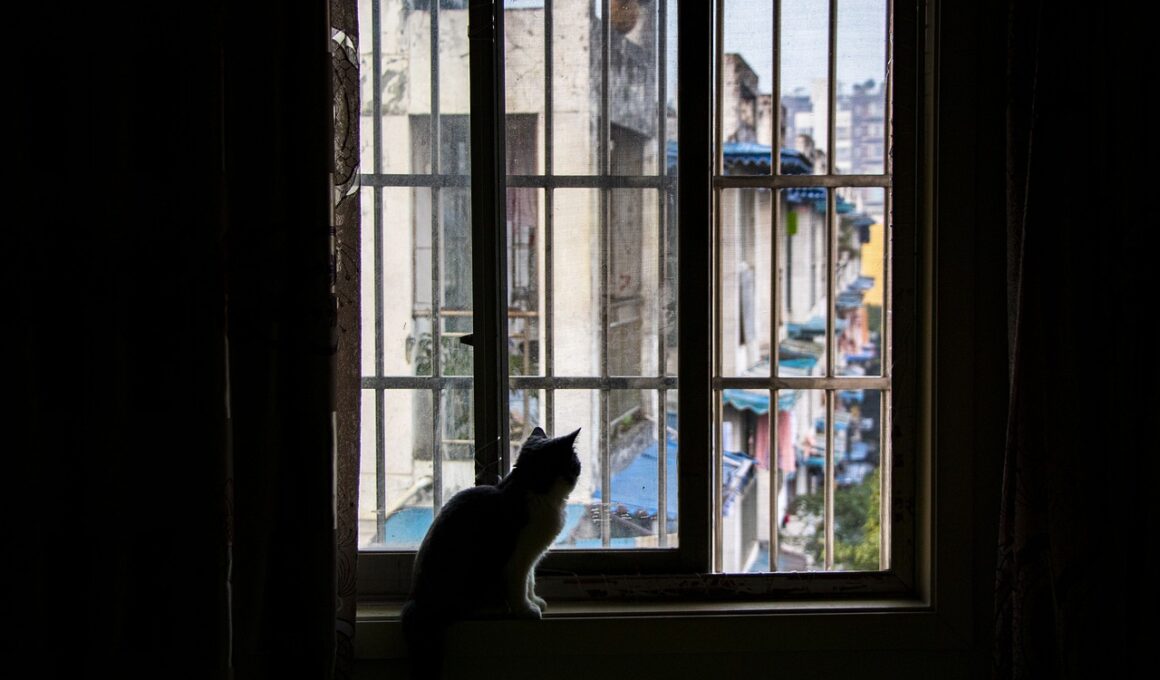Recognizing Stroke in Cats: Signs and Immediate Actions
Strokes in cats, though not as common as in humans, can occur and become life-threatening situations if not addressed immediately. Understanding the signs of a stroke in your feline friend is crucial for pet owners. Common symptoms may include sudden weakness, difficulty walking, or seizures. The distinct behaviors of a cat experiencing a stroke can vary. Some might exhibit head tilt while others may show confusion. A sudden change in behavior should always be taken seriously. If you notice your cat displaying any of these warning signs, it’s paramount to act quickly. Your response time significantly affects recovery. Remember that cats are quite adept at hiding their discomfort; hence, subtle changes may indicate an emergency. Regular veterinary check-ups can help catch underlying issues that might predispose your kitty to strokes. You should also monitor your cat’s overall health, keeping an eye on dietary habits and exercise. Be vigilant and aware, as early detection and prompt veterinary care can make a world of difference during such emergencies and substantially improve the prognosis.
Another critical aspect of stroke recognition is understanding underlying risk factors. Cats may be predisposed to strokes due to age, hypertension, heart disease, or other general health problems. Older cats typically exhibit a higher risk factor, but anyone could be affected. Regular health assessments can help identify any conditions that could predispose your cat to a stroke. Monitoring body weight and ensuring a balanced diet can mitigate some health-related risks. Furthermore, understanding your cat’s typical behavior is beneficial. If you are well-versed in their unique habits, deviations can easily stand out. For instance, while their usual playful demeanor might suddenly turn lethargic, it should be concerning. When faced with symptoms, documenting your cat’s behavior has proven helpful during vet visits. Notably, you should create a quick timeline of events—when symptoms started and their progression. This information is vital for the veterinarian to diagnose accurately. You might also prepare questions to address during the veterinary consultation. Be proactive in your feline’s healthcare journey and reach out for assistance when necessary. Quick action can position your cat on the road to full recovery.
Immediate Actions to Take
Upon recognizing potential stroke symptoms in your cat, swift action is imperative. Call your veterinarian or an emergency pet clinic immediately to discuss the situation. Keep your cat calm while waiting for instructions. Avoid pushing your pet to walk or making any abrupt movements, which could worsen their condition. If your cat appears unresponsive or falls unconscious, consider gentle handling. Take care when lifting your cat, supporting their body to prevent further injury, especially if seizures are involved. It may help to create a comfortable space where they can rest. Turn off loud noises, and ensure their surroundings are quiet and peaceful. While you complete your veterinary arrangements, gather relevant health information. Prepare to provide your veterinarian with details about any medications or other health concerns that might influence treatment decisions. Importantly, avoid giving your cat food or water before the veterinary assessment, as this could complicate diagnosis. Trust the vet’s guidance, as they will provide the best course of action. They can offer treatment options based on an accurate diagnosis of your cat’s stroke condition and recommend further care protocols.
Preventive measures can significantly impact your cat’s overall health and minimize the likelihood of strokes. Maintaining a balanced diet tailored to your cat’s age, size, and health conditions is fundamental. Foods rich in omega-3 fatty acids can enhance cardiovascular health and brain function. Likewise, encouraging regular exercise will help maintain a healthy weight, decreasing stress on the heart. Engage your cat in playtime using toys or interactive games to stimulate their physical and mental health. It’s also essential to manage environmental stressors. A calming home environment can reduce anxiety in sensitive cats, which can trigger underlying health issues. Regular health check-ups are crucial; they allow your vet to catch potential problems before they develop into serious conditions. Vaccinations and parasite control should not be overlooked, as these factors contribute to overall wellness. A healthy lifestyle, combined with attentive observation of any behavioral changes, can equip you with the necessary tools to act promptly in emergencies. In essence, stretching these preventive measures over time reduces your feline’s chances of encountering severe neurological issues like strokes.
Long-term Care for Stroke Survivors
If your cat experiences a stroke, ongoing care will be vital for their recovery. Stroke rehabilitation in felines often includes medication, changes to diet, and regular veterinary check-ups. Follow your veterinarian’s advice on managing prescriptions designed to improve blood flow and reduce clot risks. Medication may also help address any concurrent conditions. Adjusting their diet to include highly nutritious, easily digestible food can significantly support recovery. Additionally, consider supplements that promote neurological health, such as fish oil. Consistent monitoring of your cat’s recovery process is crucial. Discuss your observations with your vet, as they might suggest rehabilitation options such as physical therapy, which can be beneficial in regaining movement and strength. Creating a safe and supportive environment is also essential. Provide soft bedding and ensure easy access to necessary areas like litter boxes and food. Regular mental stimulation through gentle play can aid cognitive recovery. Be patient and attentive, as rehabilitation may take time. Celebrate small victories in your cat’s progress, fostering a positive environment. This supportive approach can make recovery less stressful for both you and your feline companion.
Informing family and friends about your cat’s condition is also important, especially if they frequently interact with your pet. Educate them on recognizing the symptoms of stroke, ensuring they can assist should an emergency arise when you’re not around. Communication fosters a support system and helps those involved to understand and approach your cat’s care better. Sharing resources or additional information about strokes in cats can help raise awareness among them. Moreover, consider joining online communities or social media groups dedicated to feline health. Engaging with other cat owners who have experienced similar issues may offer emotional support and practical advice. Always remember you’re not alone in this process. In addition, your veterinarian may provide further educational materials about stroke and neurological health in cats. Expanding your knowledge not only benefits your current situation but also promotes a preventive approach towards maintaining your cat’s health. The more informed you are, the better equipped you’ll be to provide love and care for your furry family member, ultimately contributing to a more secure environment for their well-being.
Conclusion
Recognizing stroke signs in cats is crucial for their safety and health. As responsible pet owners, we bear the responsibility of acting swiftly when symptoms arise. Understanding the risk factors, recognizing the signs, and knowing how to respond can dramatically influence the outcome of such events. Regular veterinary check-ups and preventive care play significant roles in minimizing the chances of strokes. Moreover, preparing for emergencies by remaining calm and gathering necessary information can ease the stress during an incident. If your cat survives a stroke, the journey doesn’t end there; rather, it continues with ongoing care and a supportive environment to foster healing. You will need patience and dedication to ensure a smooth recovery process. In your commitment to your cat’s health, reach out for guidance, engage with communities, and constantly seek knowledge regarding feline health. Encourage better lifestyle choices for your cat through diet, exercise, and mental stimulation. Ultimately, your love and vigilance can enrich your pet’s life and keep them safer against the threat of neurological disorders.
Taking all these aspects into account provides a holistic approach to feline health, effectively wrapping around the more technical aspects of care with emotional support and community resources. It shows that a combination of understanding, proactivity, and nurturing can lead to improved outcomes for cats facing strokes or other serious conditions. Building a deeper relationship with your veterinary team can profoundly impact your journey. Foster open communication, ask questions, and take advantage of their knowledge and expertise to ensure your cat is receiving the best care possible. Your vigilance can make a tremendous difference. Should any changes occur in your cat’s condition or behaviors, do not hesitate to reach out to your veterinarian for assistance. Remember that it’s always better to be safe than sorry. The goal is not just to treat illnesses and disorders but also to ensure a happy, fulfilling life for your beloved pet. Be proactive in both understanding potential issues and implementing prevention. This leads to a long and healthier life for your feline friend!


